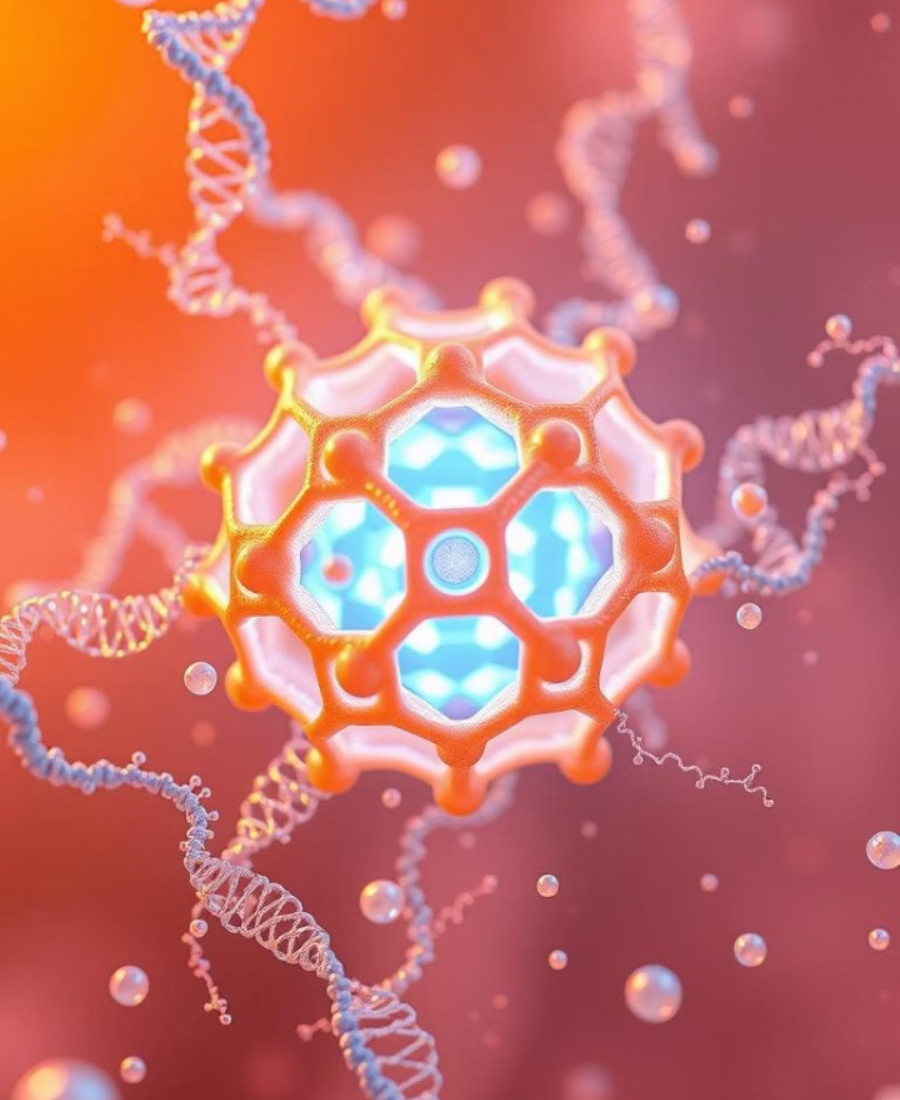01
The Program-Material Project: Advancing Protein-Controlled Nanomaterials
At the intersection of materials science and biotechnology, Program-Material is pioneering programmable nanomaterials with protein-controlled precision. Our goal is to develop dynamic hybrid nanomaterials that actively interact with and respond to biomolecules, unlocking transformative applications in precision medicine, diagnostics, and bioimaging.

02
Redefining Programmability in Nanomaterials
Conventional nanomaterials often function passively, transmitting signals to biological targets without dynamic feedback. In contrast, biological systems rely on molecular interactions and adaptive responses, ensuring precise control. Program-Material integrates synthetic biology and nanotechnology to introduce bio-based control over nanomaterial behavior, allowing proteins to regulate structure, function, and activity dynamically.
By leveraging the natural capabilities of proteins—such as selective binding and enzymatic catalysis—we aim to design hybrid nanostructures with programmable structural, functional, and spatiotemporal properties. These smart materials hold immense potential for targeted drug delivery, molecular diagnostics, and adaptive therapeutic platforms.
03
Key Research Areas
Our research is centered around three fundamental objectives:
04
A Global Collaborative Network
Program-Material brings together 10 leading institutions across Europe, the US, Australia, Argentina, Switzerland, and Japan, fostering a multidisciplinary research ecosystem that bridges DNA nanotechnology, materials chemistry, tumor biology, bio-nano interactions, biomedical imaging, and computational modeling.
By combining academic excellence with industry expertise, our consortium fosters innovation, knowledge transfer, and international collaboration—aligning with the strategic goals of Horizon Europe’s Cluster Health. This initiative strengthens global research partnerships, enhances career development for young researchers, and accelerates the translation of cutting-edge nanomaterials into real-world applications.

05
Shaping the Future of Smart Nanomaterials
Through cutting-edge research and global partnerships, Program-Material is pioneering the next generation of programmable nanomaterials. Our long-term vision extends beyond this project, with ongoing efforts to secure additional funding and drive innovation in materials science, biotechnology, and nanomedicine.
By harnessing protein-based regulatory mechanisms, we are unlocking new capabilities in nanomaterial design, enabling:
- 1
Highly Specific Sensing & Response – Nanomaterials that dynamically detect and respond to biological cues with precision.
- 2
Selective Recognition of Biological Targets – Enhanced ability to recognize and interact with specific biological signatures for improved targeting.
- 3
Efficient Navigation in Complex Environments – Optimized movement and function within biological systems for greater therapeutic efficacy.


